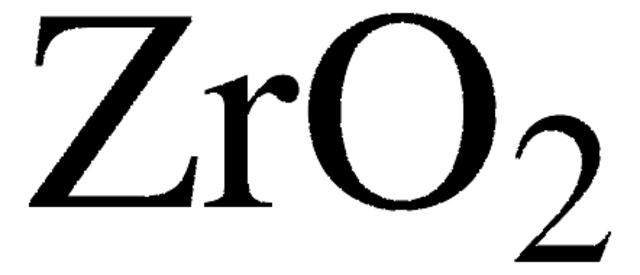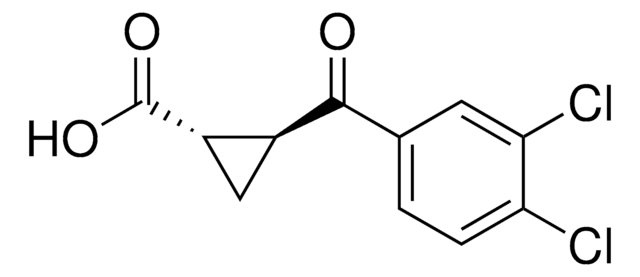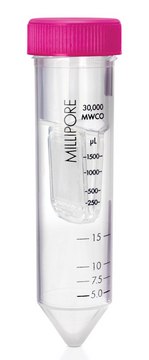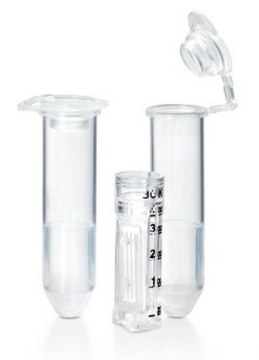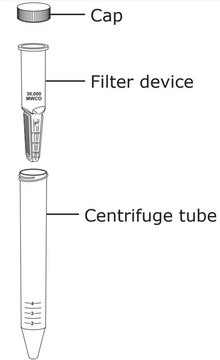SML3531
UPF-648
≥98% (HPLC)
Synonym(s):
(1S,2S)-2-(3,4-Dichlorobenzoyl)cyclopropanecarboxylic acid, (1S,2S)-2-[(3,4-Dichlorophenyl)carbonyl]cyclopropane-1-carboxylic acid, DBCC, UPF 648, UPF648
About This Item
Recommended Products
Quality Level
Assay
≥98% (HPLC)
form
powder
color
white to beige
solubility
DMSO: 2 mg/mL, clear
storage temp.
2-8°C
SMILES string
O=C(O)[C@@H]1[C@H](C1)C(C2=CC=C(C(Cl)=C2)Cl)=O
InChI
1S/C11H8Cl2O3/c12-8-2-1-5(3-9(8)13)10(14)6-4-7(6)11(15)16/h1-3,6-7H,4H2,(H,15,16)/t6-,7-/m0/s1
InChI key
ZBRKMOHDGFGXLN-BQBZGAKWSA-N
1 of 4
This Item | SML3706 | SML3136 | U111 |
|---|---|---|---|
| assay ≥98% (HPLC) | assay ≥98% (HPLC) | assay ≥95% (HPLC) | assay ≥98% (HPLC) |
| form powder | form powder | form powder | form solid |
| Quality Level 100 | Quality Level 100 | Quality Level 100 | Quality Level 100 |
| storage temp. 2-8°C | storage temp. 2-8°C | storage temp. −20°C | storage temp. 2-8°C |
| solubility DMSO: 2 mg/mL, clear | solubility DMSO: 2 mg/mL, clear | solubility - | solubility H2O: 13 mg/mL |
| color white to beige | color white to beige | color white to beige | color white |
Biochem/physiol Actions
Storage Class Code
11 - Combustible Solids
WGK
WGK 3
Flash Point(F)
Not applicable
Flash Point(C)
Not applicable
Choose from one of the most recent versions:
Certificates of Analysis (COA)
It looks like we've run into a problem, but you can still download Certificates of Analysis from our Documents section.
If you need assistance, please contact Customer Support
Already Own This Product?
Find documentation for the products that you have recently purchased in the Document Library.
Customers Also Viewed
Protocols
To measure chloramphenicol acetyltransferase activity, this procedure uses DTNB and coenzyme A. The reaction of DTNB with the –SH group on CoA results in a colorimetric increase at 412 nm.
This procedure applies to products that have a specification for the enzymatic activity of chloramphenicol acetyltransferase.
Our team of scientists has experience in all areas of research including Life Science, Material Science, Chemical Synthesis, Chromatography, Analytical and many others.
Contact Technical Service